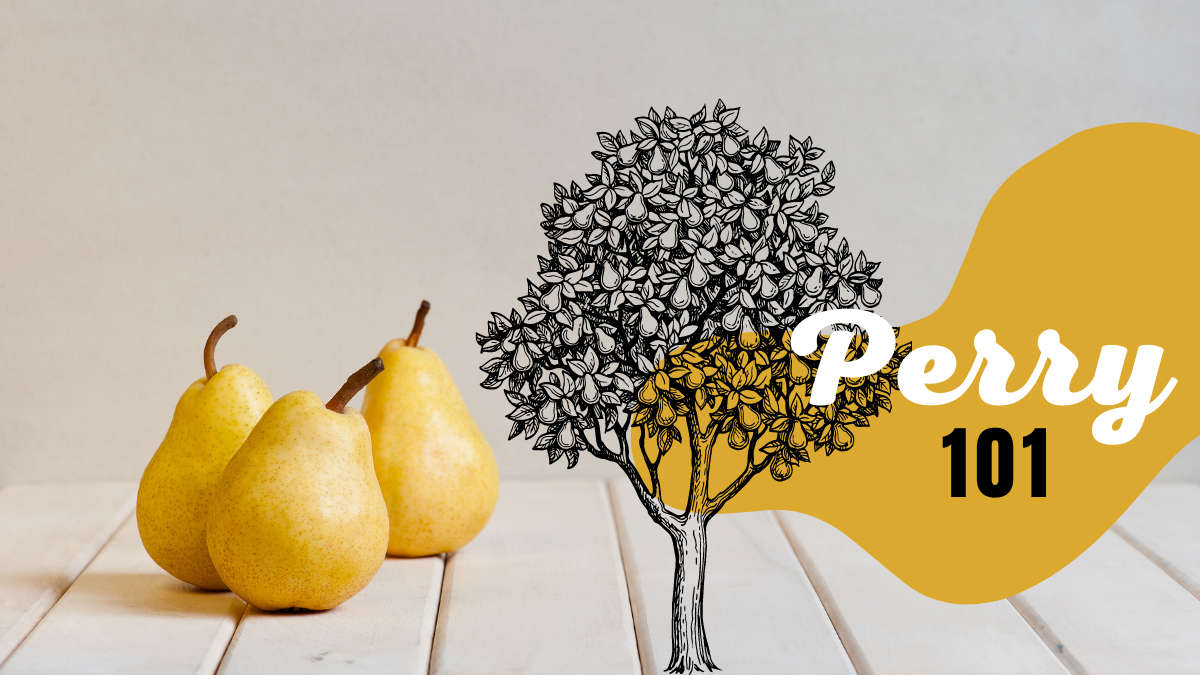Coming across a bottle of perry is not as common as finding plentiful options for beer, wine and cider. Although it’s a drink that’s been around for more than a century, not too many producers are making it. And let’s face it, many people that see it in the store might not know exactly what it is. But as cider has continued on the rise and perry is its, well, pear cousin, it’s time to change that.
We went straight to the source to sit down with Jim and Cheryl Gerlach, owners of Nashi Orchards, to learn about how perries are made and what exactly goes into this delicate drink.
What is perry?
First thing’s first, perry is not cider. Sure, the two beverages have their similarities, but when it comes to the name, perry is not the same as pear cider. “Perry is made of pear juice, the same way cider is made from apples,” Jim says.
Perry is the result of fermented pear juice. If you were to craft a beverage with fermented apple and pear juice, it would be pear cider.
“Probably the number one question we get is ‘how is it different?’” Cheryl adds. “The differences between pears and apples start at how the trees grow, the flavors and the types of acids and buffers in the fruit. Those differences really matter in that end product.”
What about the pears?
One of the main differences when it comes to perry and cider is the difference between the actual fruit being utilized. According to Cheryl, the lifespan of the two fruit trees differs greatly. Pear trees live close to 400 years, while apple trees hover around 200 years.
With that, apples typically take three years to begin producing fruit, while pear trees take seven to 10 years to produce a significant amount of fruit — what Jim refers to as more of a “long-term investment.”
The number of pear varieties is vast, with at least 60 recognized varieties grown just to make perry. Perry pears — which are quite different from your standard grocery store pears — are typically from England and France, but the Gerlachs utilize just a few of the thousands of varieties of Asian pears as well.
How is perry made?
Perry is made by utilizing the same method for making cider. But according to Cheryl and Jim, it has to be done with a bit more finesse.
Whereas cider apples are harvested right when they are at the ripest point, pears are a bit different. “A lot of Europeans pears have to go into cold storage,” says Cheryl. “They can be picked not as ripe and put in cold storage to ripen.”
The perfect ripeness on the pear is crucial because it can affect the way the pears are pressed. Pears are typically ripe for the picking in mid-September. “If they’re pressed too early, they’ll be too starchy and won’t have enough aromatics,” Jim adds.
Once the pears are ready for pressing, they’re washed, ground up and then pressed into juice. Sulfites are added to bind with the yeast naturally occurring in the pears. Next, the selected yeast for fermentation is added to the juice to begin the ferment.
“When you ferment the perry completely, there’s still some residual sugars,” Cheryl says. Even if a producer is fermenting a perry all the way to dryness, some complex sugars like sorbitol found in the pears will remain, as they are not able to ferment.
For Cheryl and Jim, they ferment their perries very cool, and the process can take six weeks on average. “We ferment slow to retain flavor,” Cheryl explains. “If you ferment too fast, it won’t retain the same aromas.”
Throughout the entire process, only stainless steel is used to keep the production area meticulously clean. Because pears have both citric acid and malic acid, the production process must be incredibly specific so the citric acid doesn’t convert into acetic acid, or vinegar, which can ruin the entire batch.
If a perry maker is working on a blend, the balance of acid, tannins and sugars are all assessed. And sometimes, sugar may be added to a perry to make it more interesting.
Once the ferment is complete, the perry is racked off and put in stainless steel tanks to let it sit. “It takes time for perries to become integrated,” Cheryl says. “Typically, we let it sit for eight or nine months.”
The flavor, aroma and clarity of the drink are all taken into consideration to determine when the perry is ready to be bottled and sold.
Get that shopping list ready!
These are the winners of the Perry category from our 5th Annual Cidercraft Awards!
PLATINUM
Pure Pear
CIDERY | Tieton Cider Works – Yakima, WA
DOUBLE GOLD
Sparkling Perry
CIDERY | Dragon’s Head Cider – Vashon, WA
GOLD
Winter Pear
CIDERY | Snow Capped Cider – Austin, CO
SILVER
Perry
CIDERY | Finnriver Farm & Cidery – Chimacum, WA
JUDGES’ PICKS
Perry
CIDERY | Offset Ciderworks – Edmonds, WA
Perry
CIDERY | Twin Sisters Cider – Kirkland, WA
Perry
CIDERY | Russell Orchards Farm & Winery – Ipswhich, MA






